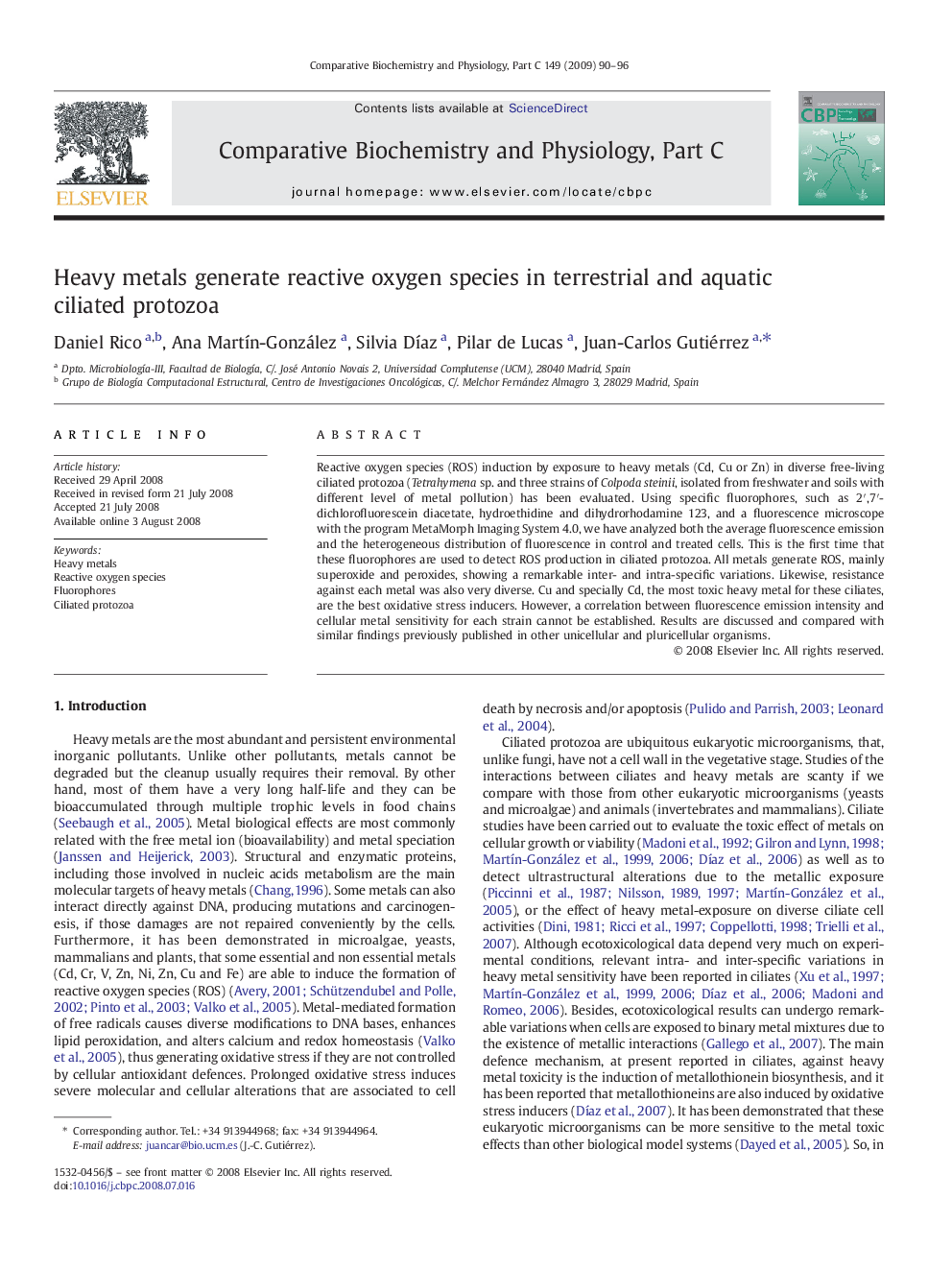| Article ID | Journal | Published Year | Pages | File Type |
|---|---|---|---|---|
| 1978276 | Comparative Biochemistry and Physiology Part C: Toxicology & Pharmacology | 2009 | 7 Pages |
Reactive oxygen species (ROS) induction by exposure to heavy metals (Cd, Cu or Zn) in diverse free-living ciliated protozoa (Tetrahymena sp. and three strains of Colpoda steinii, isolated from freshwater and soils with different level of metal pollution) has been evaluated. Using specific fluorophores, such as 2′,7′-dichlorofluorescein diacetate, hydroethidine and dihydrorhodamine 123, and a fluorescence microscope with the program MetaMorph Imaging System 4.0, we have analyzed both the average fluorescence emission and the heterogeneous distribution of fluorescence in control and treated cells. This is the first time that these fluorophores are used to detect ROS production in ciliated protozoa. All metals generate ROS, mainly superoxide and peroxides, showing a remarkable inter- and intra-specific variations. Likewise, resistance against each metal was also very diverse. Cu and specially Cd, the most toxic heavy metal for these ciliates, are the best oxidative stress inducers. However, a correlation between fluorescence emission intensity and cellular metal sensitivity for each strain cannot be established. Results are discussed and compared with similar findings previously published in other unicellular and pluricellular organisms.
